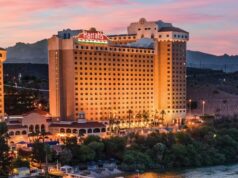
NATIONAL REPORT—Years ago, before there were standards limiting water flow, hotel showers were kind of like Niagara Falls—fast and mighty. Today, for the most part, showerheads allow 2.5 gallons of water per minute (gpm) to funnel through to guests. Increasingly, because of environmental concerns such as drought, as well as a desire to trim recurring water and energy costs, hoteliers in every lodging segment are opting for low-flow showerheads that give up a miserly 2.0, 1,85, 1.75, 1.6 or 1.5 gpm.
Every hotelier knows that one of the best ways to rankle a guest is to provide an inferior shower experience. A poorly designed 1.5 gpm showerhead will result in a guest taking a longer shower which consumes more water. Additional energy is also burned heating that extra water. Hoteliers may even be tempted to remove flow controls if a showerhead causes guest dissatisfaction.
Fortunately, showerhead suppliers have built low-flow showerheads that do not negatively impact the guest experience. Most of these products use sophisticated flow devices to help maintain the feel of powerful water flow.
“There needs to be a balance between guest satisfaction, the feel of the water coming out of the showerhead, and water conservation,” says Michael J. Santora, director of shower products for Speakman Co. in New Castle, Del. “Look for a showerhead that has a full coverage spray as well as a massage feature.”
Pressure Sensitivity is Important 
Because water pressure can vary from floor to floor of a hotel, and even from room to room, Santora says it is important to purchase a showerhead that can react to that pressure change without slowing water flow. Speakman’s Anystream Eco lines do just that, he says, while also conserving water. The company’s S-2253-E20 model can limit water flow to 2.0, 1.75 or 1.5 gpm.
Niagara Earth Massage showerheads from Niagara Conservation, Cedar Knolls, N.J., come in three different styles: wall-mount, which includes a hand-held that comes with a 72-inch hose; Soap & Soak, which helps achieve maximum water savings by giving the user control of the water’s flow with a pause valve; and the standard Earth Massage showerhead. Earth Massage models feature non-removable flow compensators and are non-aerating, which means they do not force air into the spray. They all offer 1.5 gpm performance.
Phil Germinario, director of marketing, sales and customer service for Niagara, says his company’s proprietary flow control technology ensures that water is delivered at a 1.5 gpm rate even if water pressure fluctuates from 40 pounds per square inch (psi) to 80 psi. Niagara, which has sold more than 30 million showerheads since 1977—saving 3.3 trillion gallons worth of water—is currently testing a 1.25 gpm model.
“We are going to keep trying to push the water-conservation envelope,” Germinario says.
Water Droplets Imitate Stream
Hansgrohe, based in Germany but with a subsidiary in Atlanta, manufactures a wide range of showerheads, including the Croma EcoAIR. Jason McClain, marketing communications manager for the company, says customer demand has been trending toward low-flow products, even though 2.5 gpm models are still the most popular. To provide hotel guests with a 2.5 gpm experience at a 1.6 gpm flow rate, Hansgrohe uses air injection technology. It draws the surrounding water into the center of a showerhead, infusing the water with air in a three-to-one, air-to-water ratio. Guests get the feel of a stream of water, even though it really is water droplets.
“It is made to feel like natural rain,” McClain says. “We have incorporated the technology into a number of different products.”
Alsons Corp. incorporates what it calls fluidics spray technology in its water-saving showerheads that are available with 1.85 gpm, 1.75 and 1.6 gpm spray options. Alson’s two-spray unit allows the user to switch between a water-saving 1.85 gpm and 2.5 gpm with the turn of a lever. The fluidics technology in the Alsons shower features a series of chambers that control the shape, velocity and thermal dynamics of water with no moving internal parts that would wear or need repair. This technology produces larger water droplets that stay hotter longer.
“Fluidics is a unique technology,” says John Davies, vice president of sales and marketing, Alsons Corp. “It allows you to manipulate the size of the water droplets. Users think they are getting more water even though it is flowing at a dramatically reduced rate.”

Rain Shower Trend Continues
In the last seven years, many hotels—especially luxury properties—have transitioned to rain shower type showerheads with large faces.
“We have seen a trend toward using these models,” Speakman’s Santora says. “They can be water hogs. To get ones that work at 2.5 gpm is very important.”
Adds Alsons’ Davies: “They are not really water savers. You have to stay in the shower longer to get rinsed.”
Hansgrohe’s McClain says interest in these types of showerheads appears to be waning. For now, however, his company is offering a water-saving rain shower showerhead with a 6-inch spray face that offers 1.6 gpm performance with three spray modes.
No matter what showerhead model you choose, be sure to contact your local utilities first. Rebates may be available to cover a portion of the capital cost.
Speakman Co., Hansgrohe, Alsons, and Niagara Conservation are just a sample of the many suppliers that offer low-flow showerhead products. Be sure to also check out Moen Inc., Green Suites International and Water Pik.
Glenn Hasek can be reached at editor@greenlodgingnews.com.







